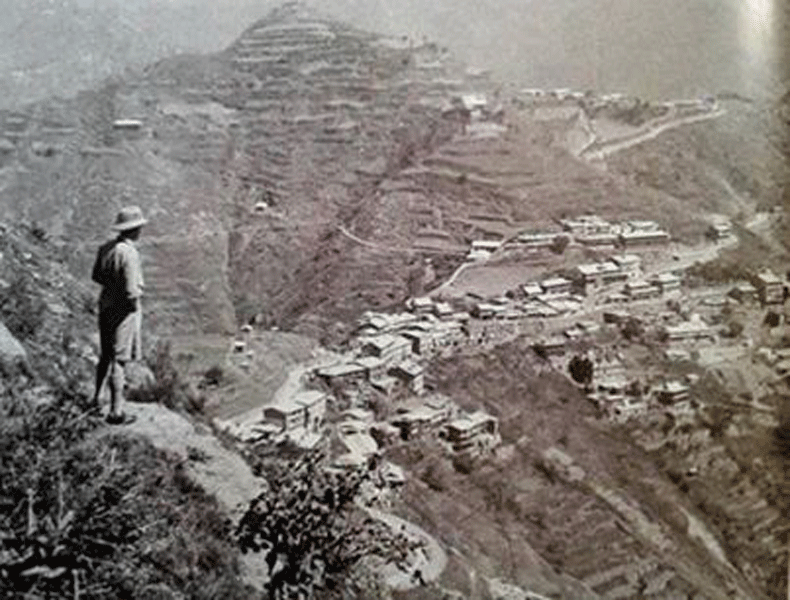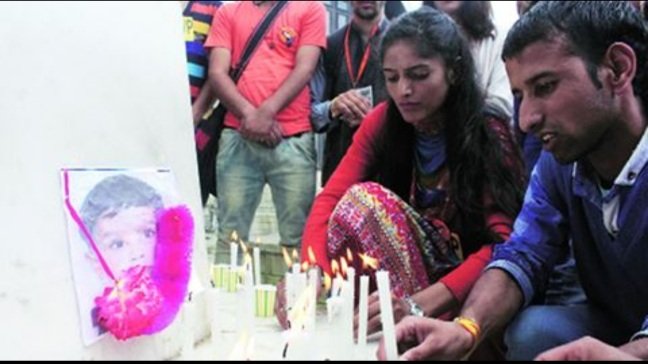
TIKENDER PANWAR, FORMER DEPUTY MAYOR, SHIMLA takes dig into the recent judgment by the Nation Green Tribunal
Just recently, November, 16, the NGT passed a historic order which is seen through different lenses and raises a ‘utopian hope’ that ‘Shimla’- the queen of hills will now be preserved, conserved because of it. The so-called heritage of the city will come back and shall be restored to the former glory! Whether this glory is that of the ‘British Raj’ or prior to that when the natives hardly lived on the mountains. The British taught the science and vocabulary of destroying the mountain’s ecology through its magnificent engineering; lifting water to a head of 2500 metres (hardly practiced in the world) , roads, buildings, electricity, transport etc. , the famous ‘Beerkhanas’ were dug to harvest snow so that the ‘English’ could enjoy chilled beer during the summers. How the mountains are to be plundered and used for human habitation was exemplified during the ‘Raj’. If one takes the time clock back it is difficult to imagine how such a huge infrastructure could be sustained (a glimpse of which could be gathered from ‘Simla, Past and present’ by Edward J Buck). It happened because of the loot of the resources of the world, part of which was invested in Shimla so that they could enjoy the pleasant weather of the mountains during the summer months and thus Shimla turned into the ‘Summer capital’ of the colonial government. And then a co-terminus vocabulary was developed called the carrying capacity of the city. Whether this was the carrying capacity of the mountains or the infrastructure developed by them, this starkly finds mention in the NGT order for Shimla as well which places the carrying capacity to be 25000 people. Before delving further on the city especially a mountain city like Shimla a fair examination of the NGT order needs to be done, which may turn the town into a ghost town as mentioned in a number of stories of Ruskin Bond and Meenakshi Chaudhary. This order seems to be done in haste, highly despicable to the interests of the people and even prowling on the relative judicial capacity. It superimposes its role not as an adjudicator but as a statutory constitutional organization creating enforcement agencies on its own, without realizing the provisions of the Act especially the Forest Rights Act, the MC Act etc. Parallel agencies with monitoring and supervisory role have been constituted which will meet once in three months and another one once in a month. This completely robs the elected municipality of its role. The NGT probably was not made aware of the fact that already similar committee called the ‘Heritage committee’ exists which meets just once a year though the mandate is otherwise. The members too have been appointed by the NGT a majority of whom are from outside the state with hardly any role of the municipality. It is quite a different scenario to pull the enforcement agencies for laxity in their work but creating parallel agencies is extremely unconstitutional. Nevertheless the 3 weeks’ time for preparing a development plan (a master plan) for the city is an important intervention that is quite keenly and desperately required.
The order of the NGT must be seen in light to the following realities.
1. This order will have repercussions on the amendment in the town and country planning (TCP) Act, which was brought out by the state legislature and which happens to be under review of the HP High court. The present NGT order snatches the capacity of the High court to even comment on the amendment. This is not possible. The High Court’s ability is juxtaposed by this order. Who is to take the call, the HP High court which is already ceased of the matter or the NGT? Further, raising the regularisation fee to Rs 5,000 per square foot implies charging a sum of Rs 60 lakh from a domestic house owner which is sheer absurdity. There is no rationality in it.
2. The order prohibits any construction in the green belt both private and institutional. This seems to be in contradiction to the Forests Rights Act (FRA) where forest rights committees(FRC) have been formed in the city to ensure development in wards for community centres, roads, schools, etc. There is a list of more than 12 items which can be constructed under the Act. The Act itself should have been challenged if it is illegal or unlawful. But the present order snatches this capacity of the people and is ultra vires of the act of the Parliament.
3. The judgement quite euphorically places its emotions about the trees, its importance in Shimla. Probably everyone does. The town has 55 % forest land. There have been studies conducted by the Himachal Forests Research Institute (HFRI) and many other scientists who have felt the urgent need of afforestation and selectively removing the old trees. Silviculture, the art and science of rearing a forest has to be practiced in Shimla. Why? Because, according to them more than 80% of the trees have achieved ‘flat tops’ which must be removed as early as possible not just for timber but also for the new species to germinate. This must be done very cautiously but the extraction has to be done. A blanket ban will slow the process and will trigger more landslides as the old trees are more vulnerable for that. Even for ‘climate change adaptability’ such green cover is of less benefit than new trees.
4. There is this paranoia about the height in structures to be built in Shimla. Quite a platitude is 2 storeys and an attic floor. The interim development plan (IDP) had mentioned 60 feet to be the limit of the building, now with this order, it has been reduced to almost half. Perhaps less than that. Without a ‘master plan’ that too with a strong geological data there is no expertise that can claim an authority on the height parameter. Even during the ‘British Raj’ there have been buildings which were more than 60 feet in height. The Central Telegraph Office (CTO) building on the Mall, the Coffee House and in that line almost every one and all of these fall in the core area of the city, all are more than 60 feet high. These buildings have stood there for nearly a century and have been constructed with brick and mortar. Similarly, the HP High Court building is more than 100 feet high, the advocates’ chamber, the new IGMC block all happen to be near that height. Does that mean there should be no floor area ratio (FAR) and the structures should not be limited. No! The point is the master plan should decide about the strength of the rock through proper investigation and according to zones the height of the building should be permitted. There are no two opinions about the fragility of the rock; Himalayas being the youngest range of mountains are more prone to landslides, despite that these structures have stood the test of time. The mountains on the North of Equator like the Shimla city range of Shiwaliks have a completely different topography from North to South and West to East. The southern part of Shimla willhave better strata to hold the structure. The north -western part will be most vulnerable because of obvious reasons. But this has to be corroborated with strong geological foundation. Only the master plan can address such a proposition. But the order first limits the number of storeys and then speaks about the development plan.
5. Where will the smart city go? Interestingly, the area based development (ABD) plan according to the smart city terminology comprises of 5 acres of redevelopment plan and the entire plan falls in the core area of the city. The order has categorically rejected any development in this area. Since the writer himself was engaged in the preparation of the smart city plan (SCP) and after a prolonged struggle in the HP High Court was eventually able to achieve that, the NGT order completely overrules the ABD plan.More than Rs 1500 crore is to be invested in the space from the Mall Road on the top to the Cart road and also the Krishna Nagar ward. This entire region has to be re-furbished. This is the place which requires maximum intervention as the structures are old, decaying and need complete overhaul. The city itself and the already debt-ridden state government never had the capacity to carry out any re-development. Now, was the chance! The ABD elaborately deals with refurbishment of Anaj Mandi, Subzi Mandi, Meat Market, Suji Line area. Multiple storeys are also proposed. This is the area where maximum activity takes place. Thousands get their livelihoods. This was to be further augmented. The plan was also to bring in business and activity to this region quite akin to Quito, the capital of Ecuador. It is completely jammed now. Cities happen to be organic structures which have evolved over a period of space and time. Just utopian wishful thinking can turn these into ghost towns. The embedded ‘resilience’ in the city and sustainability has always to be kept in mind. A single stroke of pen of the NGT can just finish that all.
6. The order also speaks about the traffic woes in the city.It is a surprise that the comprehensive mobility plan (CMP) which was generated after lots of consultations and discussions with the people and experts finds no mention. Probably the MC was never consulted. The focus has to be back on pedestrianizing the city which is an essentiality rather than finding piecemeal enforcement agencies. The CMP is part of the SCP.
Hence the effort should have been to strengthen the enforcement agencies and to build an integrated mechanism, rather than creating parallel structures. Already crores of rupees, energy, time have been spent on creation of these plans, the focus should be to implement it. And if there is laxity, which apparently is, pull and even penalise these agencies and its officers.
Everybody living in the city has a dream which may vary according to one’s need, perception and vision, but none is low or high. The dream to have a liveable, green, clean and mobile city is probably everyone’s wish. But this has to evolve through organic structures built over time.
For the ‘Old Shimla’ that the NGT is envisioning is ‘colonial’ one, which taught us how to live on a mountain, someone may have another vision, which may even be pre-colonial when hardly anyone lived on the hill tops (many anecdotes are found where the present Indian Institute of Advanced Studies (IIAS) is founded; was the place of bears and leopards.) and people practiced seasonal migration. Why should one not revert back to the same old era to conserve the mountains! This would mean completely ‘spare the mountains’. Can that happen? Never. But there could be another vision with a different lens of a ‘sustainable habitat’, where ecology, environment and human beings co-exist and live in and integral and in tangent with nature with minimum confrontation. But modern evolution cannot be for ‘ghost towns.’






Everything is very open and very clear explanation of issues. was truly information. Your website is very useful. Thanks for sharing.
Nice post. I was checking constantly this blog and I’m impressed! Very helpful info specifically the last part 🙂 I care for such info a lot. I was looking for this certain information for a long time. Thank you and best of luck.
I used to be suggested this web site by my cousin. I’m not sure whether this post is written by means of him as no one else understand such specified about my difficulty. You’re incredible! Thanks!
Really fantastic information can be found on web blog. “The only thing you take with you when you’re gone is what you leave behind.” by John Allston.
Im no longer sure the place you’re getting your info, however good topic. I must spend a while studying more or figuring out more. Thanks for wonderful information I was on the lookout for this info for my mission.
I’d have to examine with you here. Which is not one thing I usually do! I take pleasure in reading a post that may make folks think. Additionally, thanks for permitting me to comment!